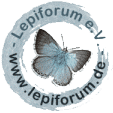Version 22 / 26 vom 3. Februar 2020 um 14:15:42 von Benjamin Morawietz: Geschlechter getrennt
Länder:

 +18Kontinente:EUAS
+18Kontinente:EUAS


 +18Kontinente:EUAS
+18Kontinente:EUASInhalt
1. Männchen
1: ♂, Türkei, Provinz Çanakkale, Biga, Bozlar, 30 m, am Köder, 10. Juni 2010 (fot. & det.: Michel Kettner)Forum
2-5: ♂, Türkei, Provinz Çanakkale, Biga, Bozlar, 30 m, am Köder, 17. Juni 2010 (fot. & det.: Michel Kettner)Forum
6-7: ♂, Griechenland; Kos, Umgebung Mataschari, 31. Mai 2011 (det. & fot.: Friedhelm Mai)Forum
8: ♂, Italien, Sizilien, Prov. Palermo, le Madonie, vic. Isnello, 800 m, 1. Juni 2013 (det. & fot.: Daniel Bartsch)Forum
2. Weibchen
1: ♀, Italien, Ligurien, Imperia, 0 m, 17. Juli 2013, Tagfund (det. & Studiofoto: Erik Steen Larsen)Forum
3. Diagnose
3.1. Männchen
1: ♂, Griechenland, Ioannina, Konitsa, 600 m, 15. Juli 1998 (leg., coll., det. & Foto Theo Garrevoet)
2: ♂, Griechenland, Ostmakedonien und Thrakien, Kavala, leg. Michel Kettner mit Pheromone, 4. Juni 1998 (Foto: Michel Kettner), det. Daniel Bartsch
3.2. Weibchen
1: ♀, Griechenland, Thesprotia, Finiki, 50 m, 14. Juli 2000 (leg. J. Dils & J. Faes, coll., det. & Foto Theo Garrevoet)
3.3. Erstbeschreibung
1-3: Esper ([1789]: 9, pl. XXXVIII fig. 4) [Text: Reproduktion Jürgen Rodeland nach Band im Staatlichen Museum für Naturkunde in Karlsruhe; Tafel: nach Copyright-freiem Scan auf www.biodiversitylibrary.org]
4. Biologie
4.1. Habitat
1: Griechenland, Kos, Umgebung Mataschari, 31. Mai 2011 (Foto: Friedhelm Mai)Forum
5. Weitere Informationen
5.1. Andere Kombinationen
- Tinthia tineiformis (Esper, 1789) [so in der [Fauna Europaea, last update 23 July 2012, version 2.5]]
5.2. Etymologie (Namenserklärung)
„Tinea Schabe, Motte.“
5.3. Publikationsjahr der Erstbeschreibung
Wir folgen den Angaben von Heppner (1981).
5.4. Literatur
- Erstbeschreibung: Esper, J. C. („1789“) [1789-1804]: Supplementband der europäischen Schmetterlinge. Heft II: 1-52, pl. XXXVII-XLVII. Erlangen (Wolfgang Walther).
- Heppner, J. B. (1981): The dates of E. J. C. Esper's Die Schmetterlinge in Abbildungen ... 1776–[1830]. — Archives of Natural History 10 (2): 251–254.

































